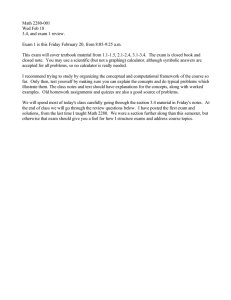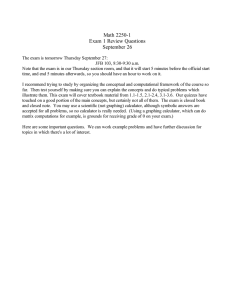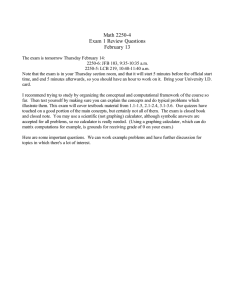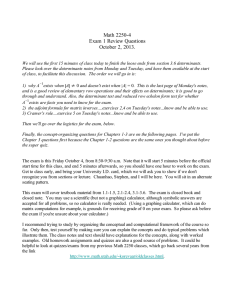Math 2250-4 Superquiz 1 Review Questions September 19
advertisement
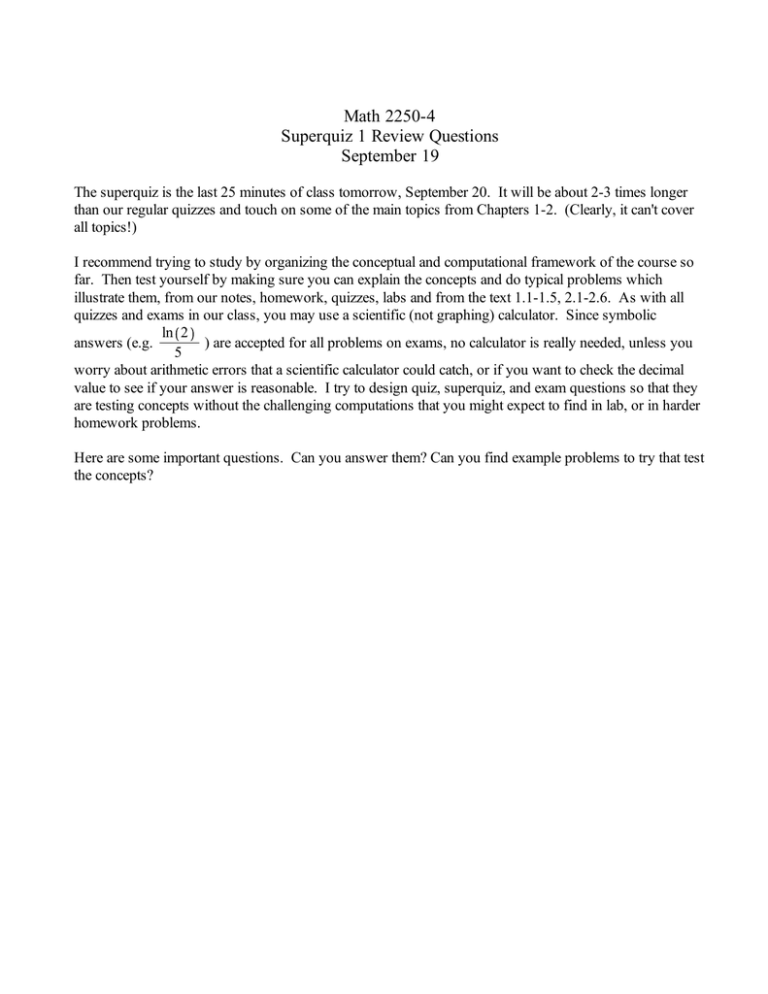
Math 2250-4 Superquiz 1 Review Questions September 19 The superquiz is the last 25 minutes of class tomorrow, September 20. It will be about 2-3 times longer than our regular quizzes and touch on some of the main topics from Chapters 1-2. (Clearly, it can't cover all topics!) I recommend trying to study by organizing the conceptual and computational framework of the course so far. Then test yourself by making sure you can explain the concepts and do typical problems which illustrate them, from our notes, homework, quizzes, labs and from the text 1.1-1.5, 2.1-2.6. As with all quizzes and exams in our class, you may use a scientific (not graphing) calculator. Since symbolic ln 2 answers (e.g. ) are accepted for all problems on exams, no calculator is really needed, unless you 5 worry about arithmetic errors that a scientific calculator could catch, or if you want to check the decimal value to see if your answer is reasonable. I try to design quiz, superquiz, and exam questions so that they are testing concepts without the challenging computations that you might expect to find in lab, or in harder homework problems. Here are some important questions. Can you answer them? Can you find example problems to try that test the concepts? 1a) What is a differential equation? What is its order? What is an initial value problem, for a first or second order DE? 1b) How do you check whether a function solves a differential equation? An initial value problem? 1c) What is the connection between a first order differential equation and a slope field for that differential equation? The connection between an IVP and the slope field? 1d) Do you expect solutions to IVP's to exist, at least for values of the input variable close to its initial value? Why? Do you expect uniqueness? What can cause solutions to not exist beyond a certain input variable value? 1e) What is Euler's numerical method for approximating solutions to first order IVP's, and how does it relate to slope fields? (You are expected to remember the steps for Euler, but any improved Euler or Runge-Kutta problem would include the pseudo-code for one step.) 1f) What's an autonomous differential equation? What's an equilibrium solution to an autonomous differential equation? What is a phase diagram for an autonomous first order DE, and how do you construct one? How does a phase diagram help you understand stability questions for equilibria? What does the phase diagram for an autonomous first order DE have to do with the slope field? 2) Can you recognize the first order differential equations for which we've studied solution algorithms, even if the DE is not automatically given to you pre-set up for that algorithm? Do you know the algorithms for solving these particular first order DE's? 3) Can you convert a description of a dynamical system in terms of rates of change, or a geometric configuration in terms of slopes, into a differential equation? What are the models we've studied carefully in Chapters 1-2? What sorts of DE's and IVP's arise? Can you solve these basic application DE's, once you've set up the model as a differential equation and/or IVP?

